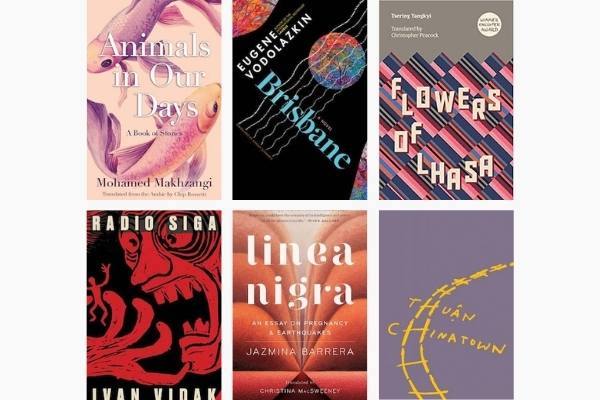I was around twelve, far too old to not realize what I was seeing. One night our usual evening study session at my Tibetan boarding school in Dharamsala, the capital of exile Tibet in India, was canceled. Instead, the school monitors herded us into the main hall. A white sheet hung as a screen onstage and we watched the images projected onto it.
A Tibetan man wearing army fatigues gets off a bus. With his crew cut and military physique, he is clearly a soldier of the Tibetan unit of the Indian army, a soldier retired and returning home to his Tibetan settlement in the Indian South, it turns out. Carrying an oversized duffel bag and a stereo loudly blaring Bollywood music on his shoulder, he saunters into the alleys of the settlement as kids watch him admiringly. He learns English from a Tibetan woman in lessons that sweep the hall with delighted laughter, as my classmates and I see mirrored on the screen our own struggles with foreign languages, Hindi and English. She tells him he’s an idiot and he annoys her by saying things like, “If P-U-T is ‘poot’, then why isn’t C-U-T ‘coot’?” At the end of half an hour, the man and the woman run into the fields and chase each other around a tree in the leitmotif of all Hindi filmi prem kahaniya.
I watched the whole thing, entranced and bewildered. It was only at the very end of the half hour, when the couple circled the tree in the recurring Indian cinematic trope of romantic love, that I finally realized with a jolt what I was watching: this was a Tibetan film, a Tibetan romantic comedy. I had never seen a Tibetan film before. There were none. There were no Tibetan films, no Tibetan short stories, no Tibetan novels. Junot Diaz says, “You know how vampires have no reflections in the mirror? If you want to make a human being a monster, deny them, at the cultural level, any reflection of themselves.” We grew up, those of us who grew up in exile but also those of us who grew up in Tibet, all of us, without reflections.
We have more mirrors now. The 1980s saw the birth of modern Tibetan literature. These days, we have Tibetan writers writing poetry, essays, short stories, and novels in Tibetan, English, and Chinese. Every now and then, I can catch a glimpse of myself, or someone who looks very like me, in the looking glass. This is no small thing that these writers—and filmmakers and artists and musicians—have given us. It’s only when art gives us entry into the lives of people like ourselves, with our loves and losses, our joys and sorrows, our hope and our despair, that we can begin to make sense of our own lives, to understand, cherish, and glory in our own humanity.
This issue of Words without Borders introduces the English reader to three major writers who write in Tibetan language: Pema Bhum, Pema Tseden, and Kyabchen Dedrol. There are many others. Restricted by time, I could only choose writers whose work I already know and love, writers with whom I already have a relationship.
Pema Bhum is a writer’s writer, by which I mean that he is loved not only by readers but also revered by writers. Bhum’s two gorgeously written memoirs are a cornerstone of modern Tibetan literature, not least for being some of the only examples of Tibetan scar literature; there are very few Tibetan accounts of the Chinese Cultural Revolution. “Wink,” with its wonderful absurdist, subversive humor, depicts some of the last days of the Cultural Revolution as seen in Tibet and is one of my absolute favorite short stories.
Pema Tseden’s “The Dream of the Wandering Minstrel” is a mysterious and very cinematic short story, which is no surprise when you consider that in addition to being a very well-known writer, Pema Tseden is also Tibet’s premier filmmaker. The haunting story of Tsering the Wandering Minstrel appears to take place in some medieval, otherworldly era, but of course it doesn’t. The dunglenpa རྡུང་ལེན་པ་༏ —a particular type of Tibetan musician—is a meaningful figure of contemporary Tibetan social life. Pema Tseden also made the beautiful and brilliant film The Search, a different but parallel narrative that I would urge readers to watch.
Kyabchen Dedrol, one of the best young writers in Tibet, is a leading figure of the so-called Third Generation, a group of young writers from Amdo in northeastern Tibet. Dedrol was among the first practitioners of magical realism in Tibetan fiction and “The Agate and the Singer” is a short, strange, and dreamlike magical realist fable.
All these writings are located inside Tibet, specifically in Amdo, the nexus of modern Tibetan literature, but this is a felicitous happenstance. Contemporary Tibetan literature—along with art, cinema and music—is located within and created both inside and outside Tibet. In fact a great deal of art by Tibetans is created at the borders of homeland and exile, along the continuum of nostalgia for the past, suffering in the present, and dreams for the future.










